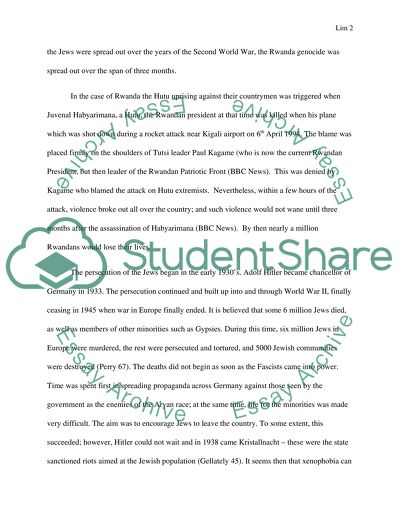Cite this document
(“The Rwanda Genocide Essay Example | Topics and Well Written Essays - 2000 words”, n.d.)
Retrieved from https://studentshare.org/english/1428691-holocaust
Retrieved from https://studentshare.org/english/1428691-holocaust
(The Rwanda Genocide Essay Example | Topics and Well Written Essays - 2000 Words)
https://studentshare.org/english/1428691-holocaust.
https://studentshare.org/english/1428691-holocaust.
“The Rwanda Genocide Essay Example | Topics and Well Written Essays - 2000 Words”, n.d. https://studentshare.org/english/1428691-holocaust.


